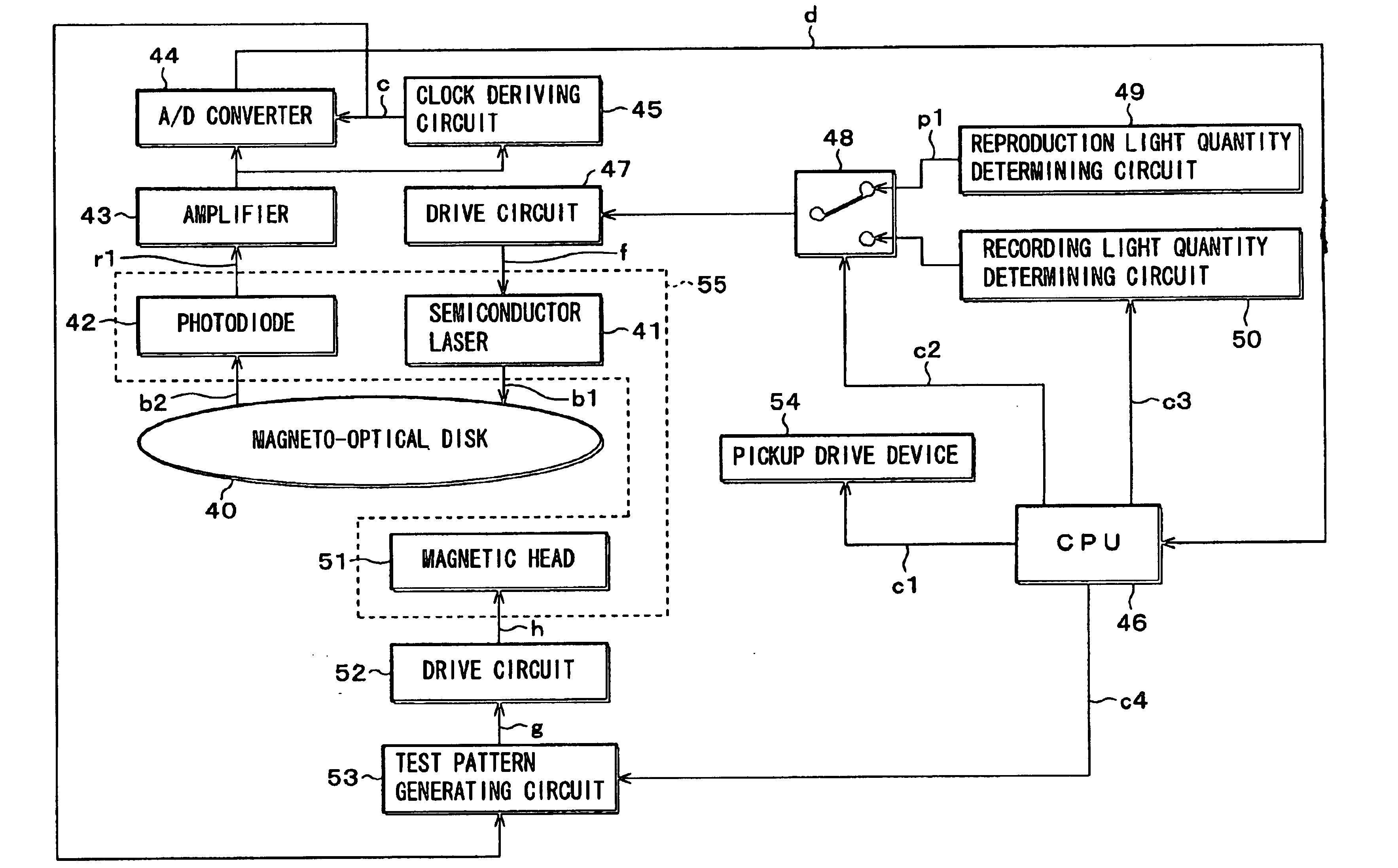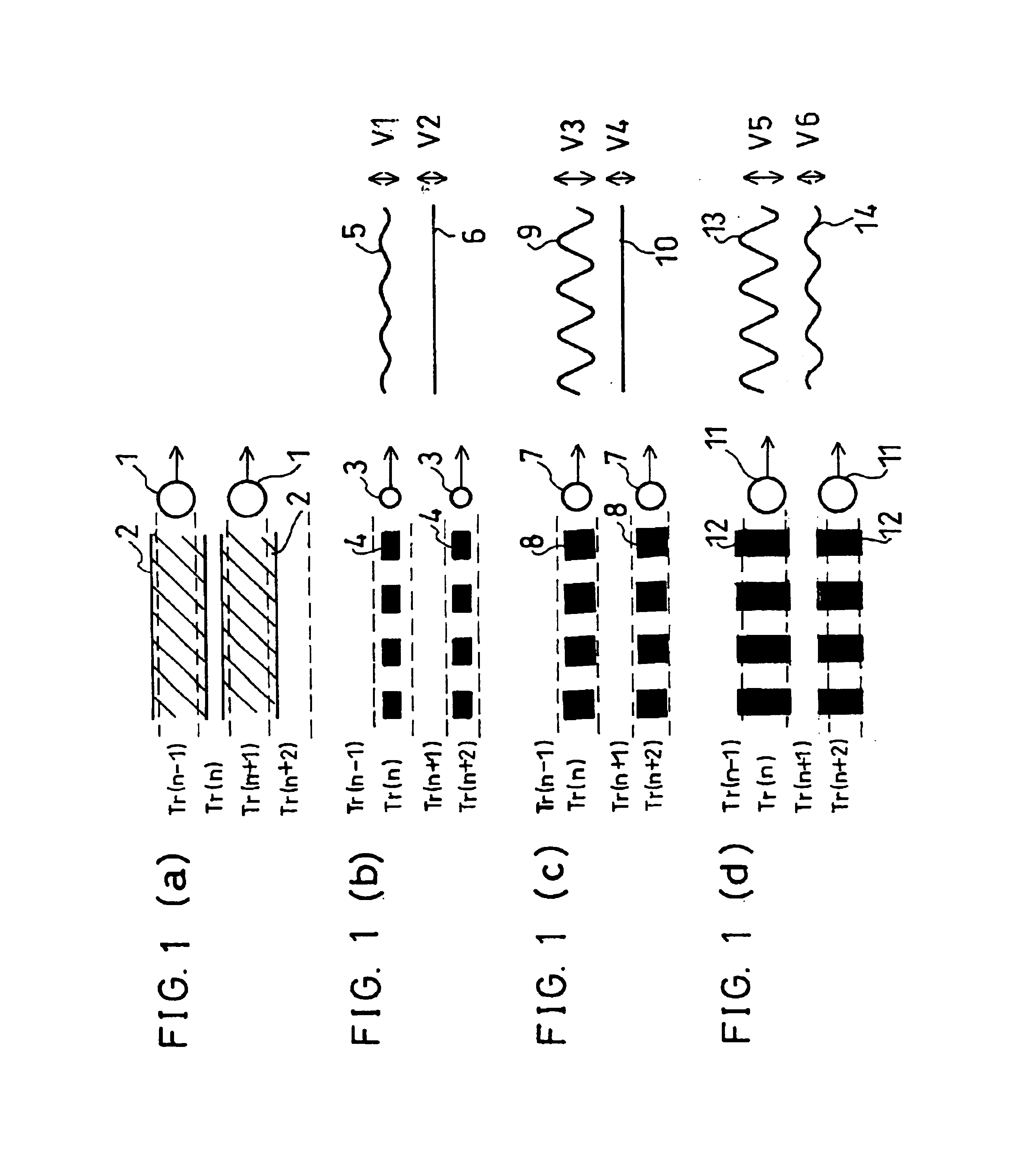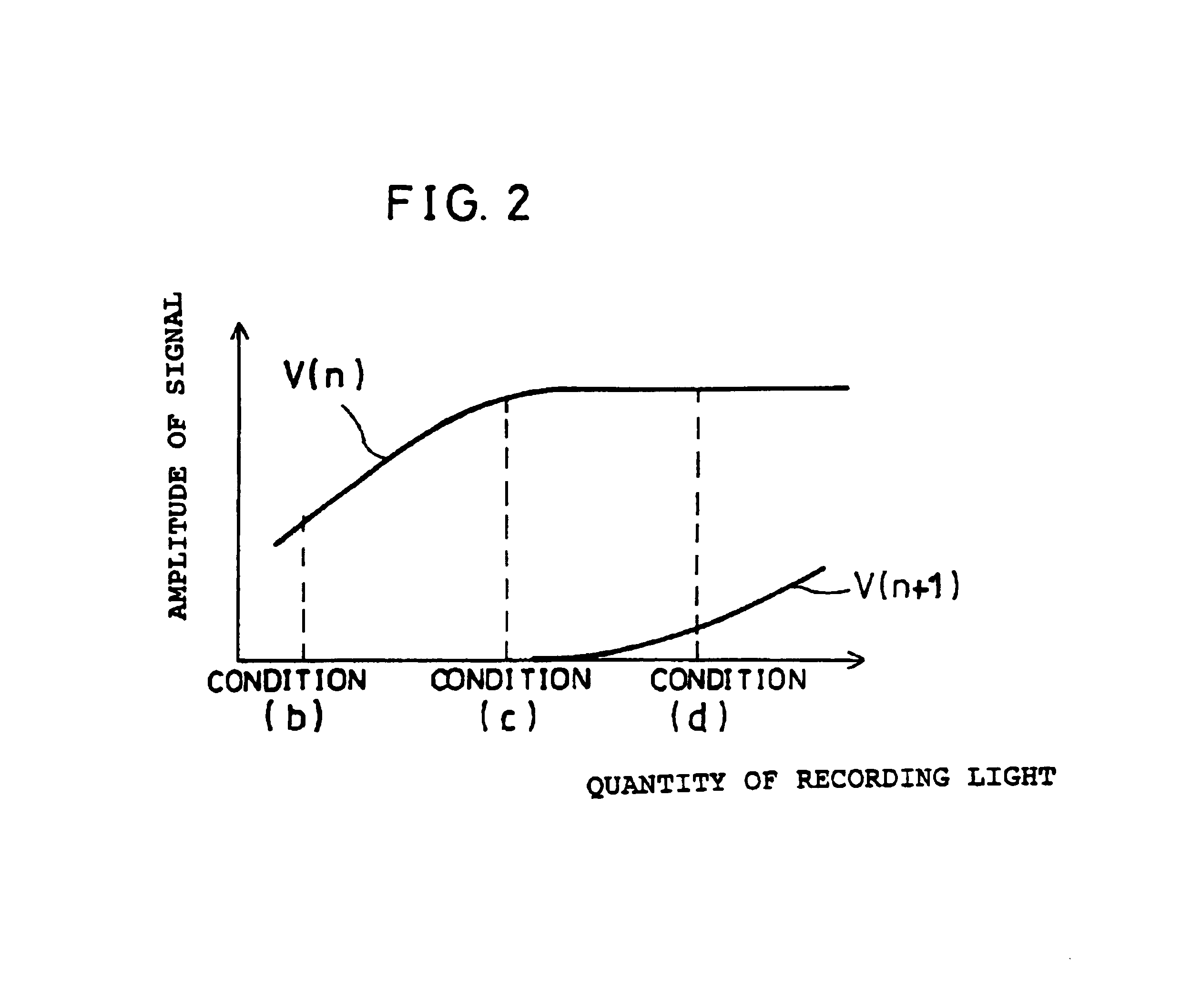Optical recording method and optical recording device
a recording method and recording magnetic field technology, applied in the field of optical recording methods and optical recording devices, can solve the problems of difficult to achieve high density recording, affecting the quality of recording, so as to improve the level of high density track recording
- Summary
- Abstract
- Description
- Claims
- Application Information
AI Technical Summary
Benefits of technology
Problems solved by technology
Method used
Image
Examples
embodiment 1
[0067]Taking magneto-optical recording methods and devices as examples, the following description will discuss an embodiment of the present invention in reference to FIG. 1(a) to FIG. 1(d), FIG. 2, and FIG. 3.
[0068]Here, magneto-optical recording is effected through modulation of a magnetic field. There are various recording conditions that should be optimized in magnetic-field-modulated recording: namely, the quantity of recording light (the quantity of a light beam projected on the optical recording medium during recording), the strength of a recording magnetic field (the strength of a magnetic field applied to the optical recording medium during recording), etc. Among them, we will focus for convenience in description on the quantity of recording light As to optimization of the strength of a recording magnetic field, a similar description applies, so a brief explanation will be given at the end. Accordingly, hereinafter, the strength of a recording magnetic field is assumed to be...
embodiment 2
[0096]Now the following description will discuss another embodiment of the present invention in reference to FIG. 4 and FIG. 5. Here, for convenience, the members of the present embodiment that are identical to those of embodiment 1 will not be explained in detail, or their description will be totally omitted.
[0097]According to embodiment 1, changes were detected in the amplitudes of signals reproduced from the track Tr(n) and its adjacent track Tr(n+1) to determine an optimum quantity of light In some cases, however, this method fails and it becomes impossible to determine an optimum quantity of light
[0098]FIG. 4 is drawn by plotting the amplitudes V(n) and V(n+1) of the read-out signals reproduced respectively from the track Tr(n) and its adjacent track Tr(n+1) against the quantities of recording light, with recording marks being written in the tracks Tr(n) and Tr(n+2) under a recording condition illustrated in FIG. 1(b) (condition (b)), that illustrated in FIG. 1(c) (condition (c...
embodiment 3
[0112]The following description will discuss another embodiment of the present invention in reference to FIGS. 2, 6(a) to 6(d), 7, 8, 9, 10(a) to 10(c), 11, 12, and 13. Here, for convenience, the members of the present embodiment that are identical to those of the previous embodiments will not be explained in detail, or their description will be totally omitted.
[0113]Those methods detailed in embodiments 1 and 2 were such that the width of recording marks was readily controllable based on variations in the amplitude of a signal reproduced from a specified track and those of a signal reproduced from an adjacent track which is affected by spillover effects. However, the detecting sensitivity is not sufficiently high, because the amplitude V(n+1) of a signal reproduced from the track Tr(n+1) is small as shown in FIG. 2.
[0114]Accordingly, in the present embodiment, a method will be discussed whereby the amplitude varies greatly so that the optimum quantity of recording light is detectab...
PUM
 Login to View More
Login to View More Abstract
Description
Claims
Application Information
 Login to View More
Login to View More - R&D
- Intellectual Property
- Life Sciences
- Materials
- Tech Scout
- Unparalleled Data Quality
- Higher Quality Content
- 60% Fewer Hallucinations
Browse by: Latest US Patents, China's latest patents, Technical Efficacy Thesaurus, Application Domain, Technology Topic, Popular Technical Reports.
© 2025 PatSnap. All rights reserved.Legal|Privacy policy|Modern Slavery Act Transparency Statement|Sitemap|About US| Contact US: help@patsnap.com



